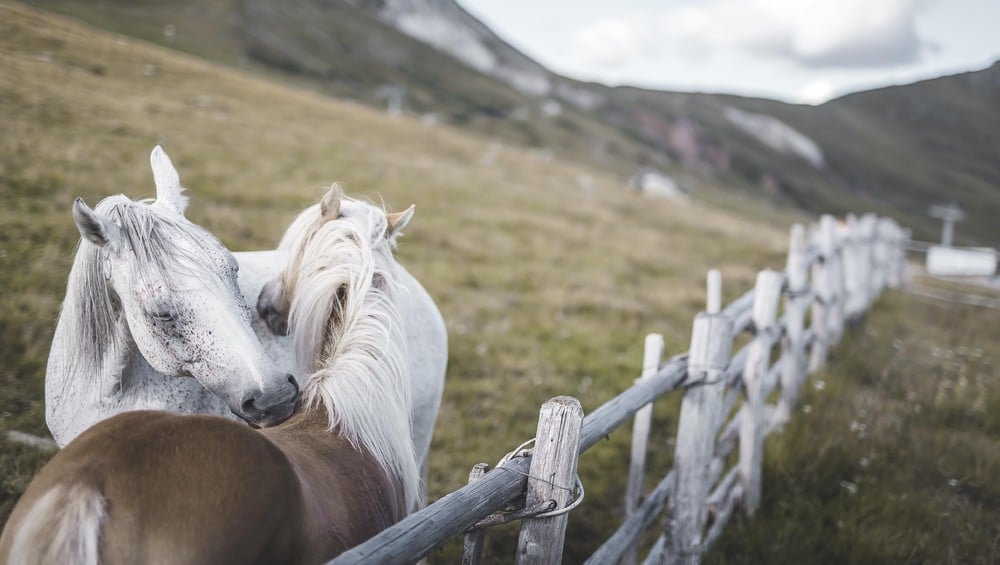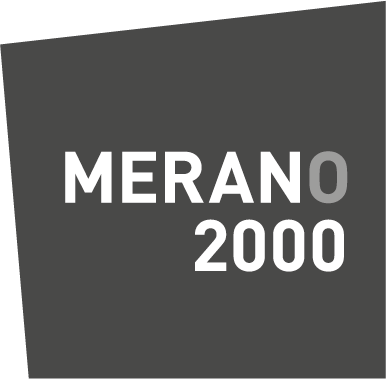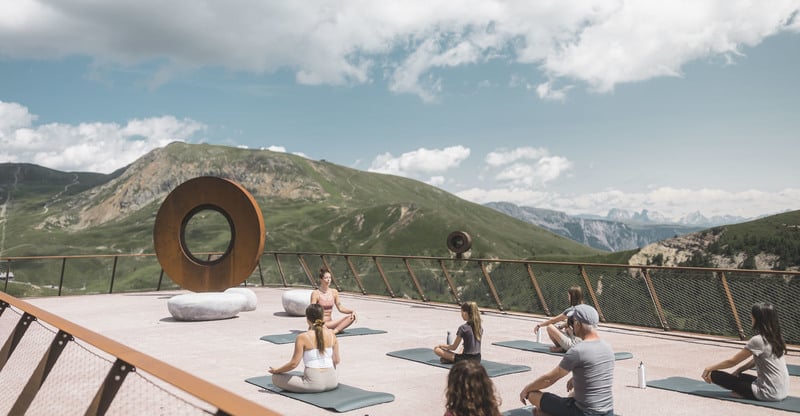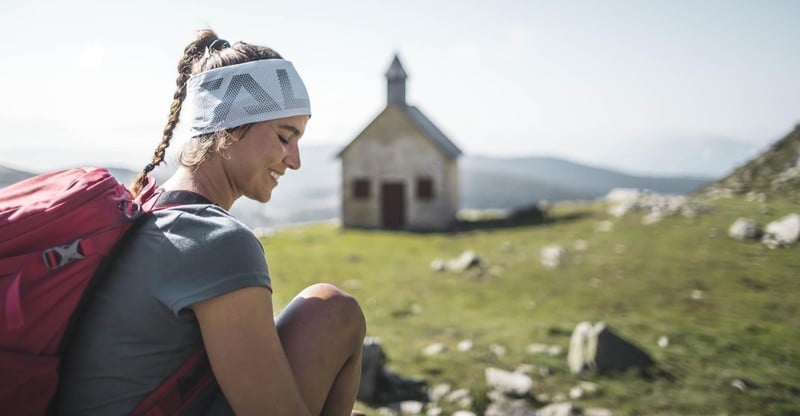
Leisure Area & Habitat
Our Alpine Pastures
For holiday-makers and locals, they are the place where the stresses of everyday life give way to well-earned relaxation. But the species-rich high pastures that nestle softly among the hills and slopes at the foot of the Ivigna mountain are also important from an economic point of view. From mid-May, the farmers traditionally bring their animals to the pastures – first the cattle and then one or two weeks later their horses. Until late September the animals spend the summer there, feed on the fresh grass and juicy herbage and enjoy the healthy mountain air – side by side with hikers, who in some cases are already up and on their way to the summit in the early hours so that they can enjoy the unique mountain panorama in the light of the rising sun. For the farmers, the months that the animals spend on the alpine pastures come as a relief, as during this time they are able to get on with the countless jobs that need to be done around the farm and in the fields. The saving in feed costs is a welcome side benefit that cannot be underestimated. And alongside the economic aspect and the positive effect on the wellbeing of the animals, alpine farming plays another important role – the preservation of our landscape. That is because the continuous grazing of the grassy areas by the cows, sheep, goats and horses prevents the alpine meadows from growing wild and ensures that the ground remains tightly packed, which in turn reduces the risk of avalanches and mudslides.
The alpine pastures of Avelengo, Verano and Merano 2000 are overwhelmingly privately owned or are run by one of the total of six interest associations (Interessentschaften). The skiing and hiking region of Merano 2000 belongs to the Piffing interest association. In the last year, 135 cattle and 50 horses spent their summer here. Added to this are around 30 horses and foals on the Kirchsteiger Alpine Cottage and 250 cattle, almost 70 horses and a good 750 sheep who were driven up to the Öttenbacher Alp at the foot of the Mittager from the Val Sarentino Valley. In total, a considerable flock of animals, which younger hikers in particular love to count. The typical cow bells that the animals wear around their necks are also a source of delight. These are not there simply for decoration, but instead ensure that the animals are easier to find in the forest or during bad weather. Apart from this, they are important for the sense of belonging within the herd, as the animals get their bearings from the sound of the bells. Incidentally: with a little luck and a telescope in your backpack, you should also be able to catch a glimpse of other animal inhabitants of the alpine pastures of Merano 2000, such as marmots, ibexes or black grouse on the Spieler. Good opportunities for observing these rare wild animals in their natural habitat can be found, for example, along the hiking routes that lead from the cable car mountain station over the Giogo di Pietramadra up to the idyllic Lake S. Pancrazio.
The alpine pastures of Avelengo, Verano and Merano 2000 are overwhelmingly privately owned or are run by one of the total of six interest associations (Interessentschaften). The skiing and hiking region of Merano 2000 belongs to the Piffing interest association. In the last year, 135 cattle and 50 horses spent their summer here. Added to this are around 30 horses and foals on the Kirchsteiger Alpine Cottage and 250 cattle, almost 70 horses and a good 750 sheep who were driven up to the Öttenbacher Alp at the foot of the Mittager from the Val Sarentino Valley. In total, a considerable flock of animals, which younger hikers in particular love to count. The typical cow bells that the animals wear around their necks are also a source of delight. These are not there simply for decoration, but instead ensure that the animals are easier to find in the forest or during bad weather. Apart from this, they are important for the sense of belonging within the herd, as the animals get their bearings from the sound of the bells. Incidentally: with a little luck and a telescope in your backpack, you should also be able to catch a glimpse of other animal inhabitants of the alpine pastures of Merano 2000, such as marmots, ibexes or black grouse on the Spieler. Good opportunities for observing these rare wild animals in their natural habitat can be found, for example, along the hiking routes that lead from the cable car mountain station over the Giogo di Pietramadra up to the idyllic Lake S. Pancrazio.

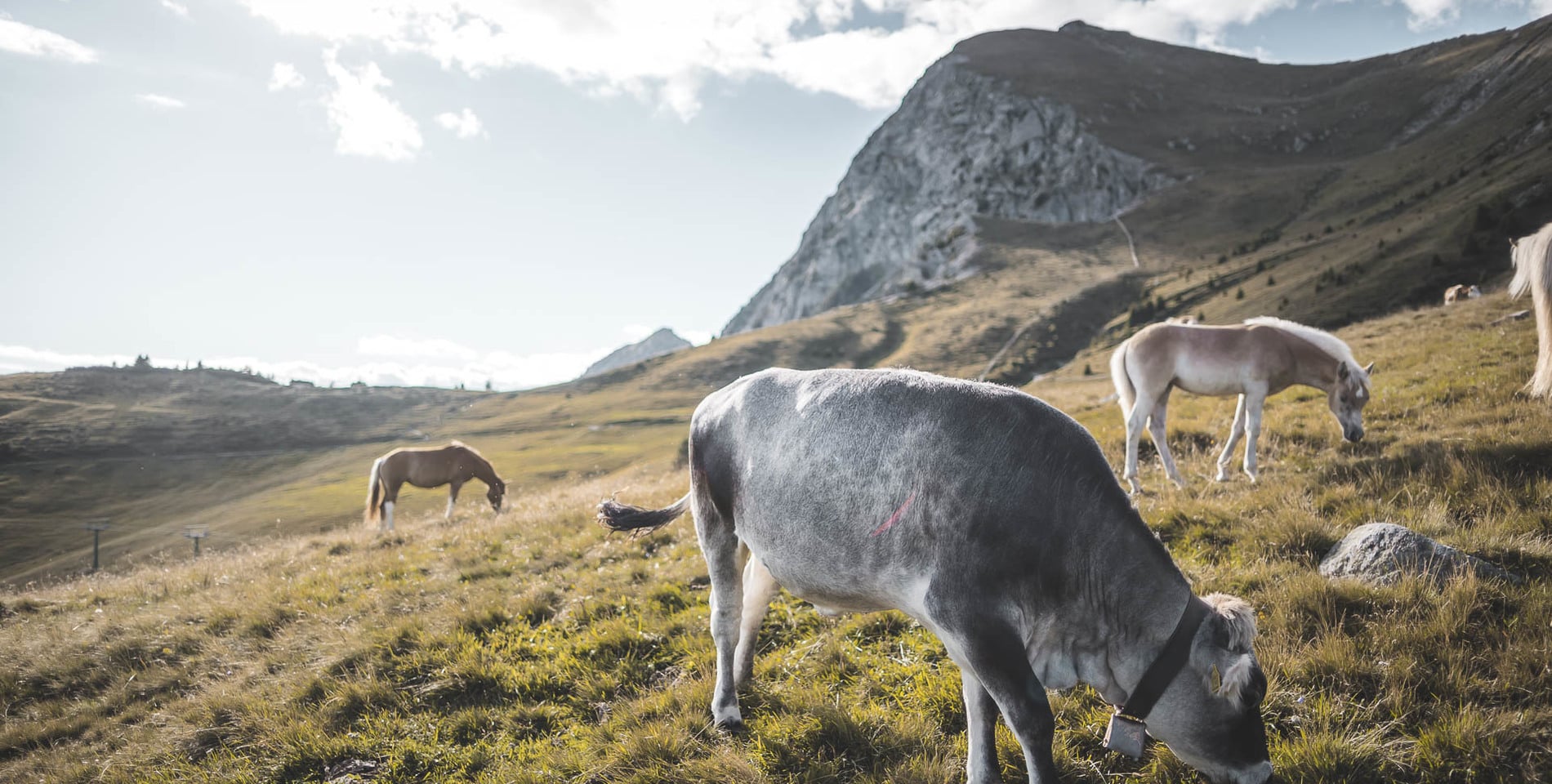

And how should you behave if you meet a herd of grazing animals? First of all: grazing animals are not for petting. You should maintain a safe distance from the herd and under no circumstances approach the animals, for example to take their photographs or to feed them. Dogs must always be kept on a lead; dog bags must always be taken back down into the valley with you and disposed of properly there. Hikers must keep to the marked paths and heed fences and barriers in all circumstances. If you come to a gate, pass through it quickly and close it properly behind you. This is to prevent cattle or horses from moving into the wrong part of the pasture and the farmer or shepherd having to start an extensive search. If you go out with the necessary care and pay people, animals and nature the respect that they deserve, then nothing will stand in the way of a trouble-free mountain experience.
TIP: Open-air mass at the chapel of Saint Oswald
On 5th August, the feast day in honour of St. Oswald, the patron saint of cattle and herds, is held at Merano 2000. After the procession in the morning and the field mass at the little mountain church at 2,365 metres above sea level, the mountain refuges and huts invite everyone to enjoy abundant celebrations, with music and dancing, a happy atmosphere and delicious food.
TIP: Open-air mass at the chapel of Saint Oswald
On 5th August, the feast day in honour of St. Oswald, the patron saint of cattle and herds, is held at Merano 2000. After the procession in the morning and the field mass at the little mountain church at 2,365 metres above sea level, the mountain refuges and huts invite everyone to enjoy abundant celebrations, with music and dancing, a happy atmosphere and delicious food.
Text: Tourist Office Hafling-Vöran-Meran 2000

